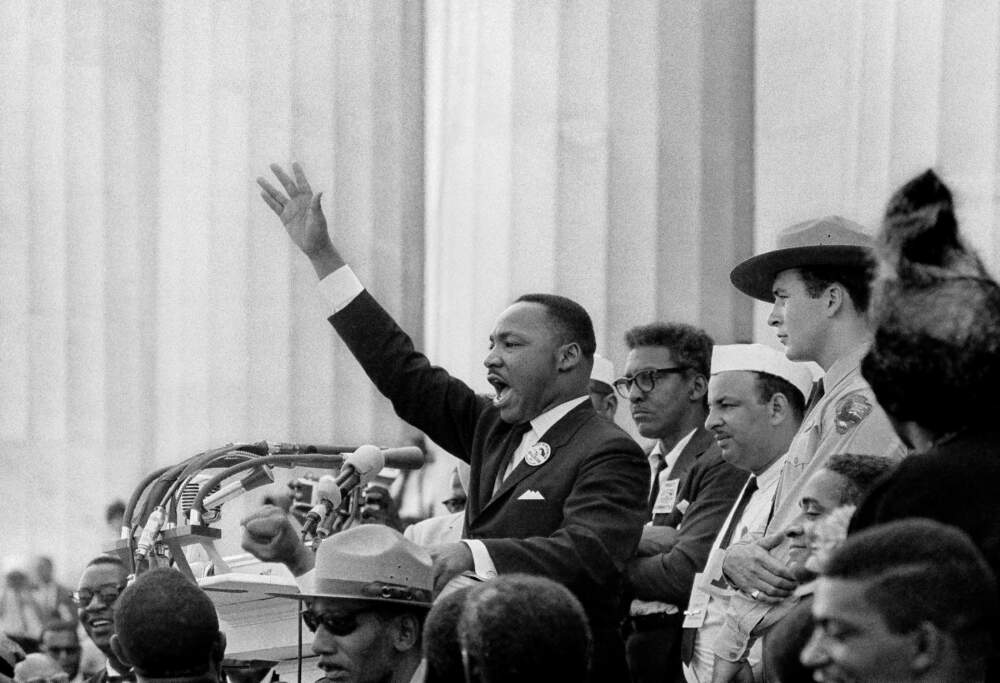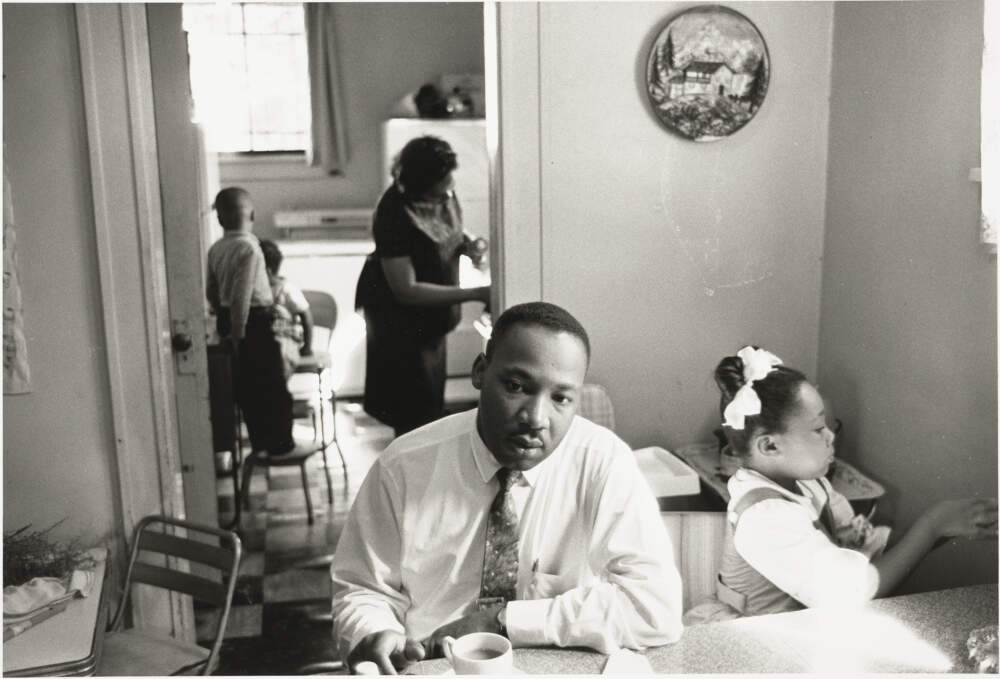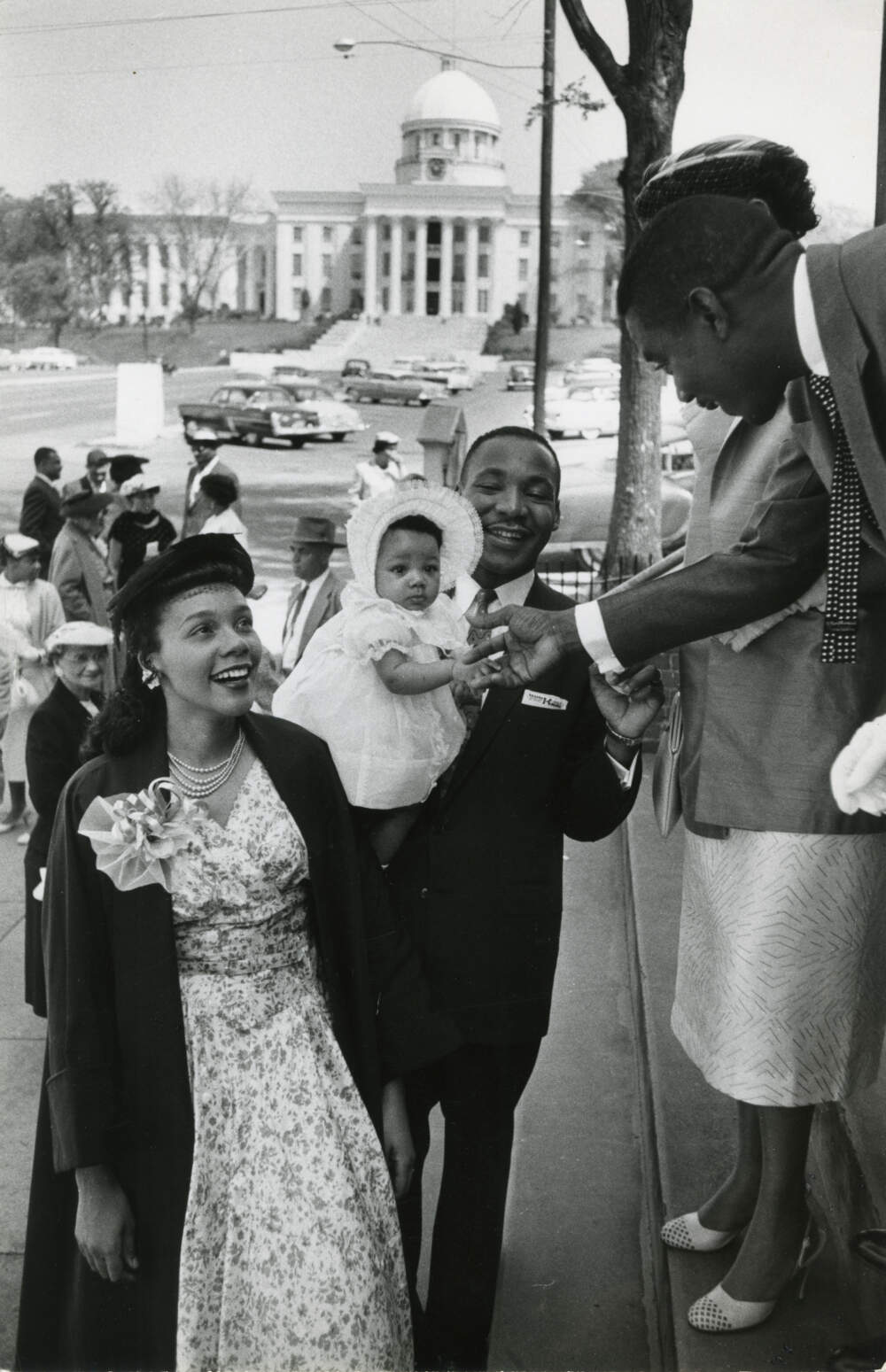Advertisement
Was Dr. Martin Luther King Jr. more radical than we remember? 'King: A Life' explores the question
Resume
Editor's note: This segment was rebroadcasted on Jan. 12, 2024. Find that audio here.
Dr. Martin Luther King Jr. knew as a college student that he was going to "kill Jim Crow." We learn about King in a new biography that includes some new revelations about the man.
Here & Now's Scott Tong talks with Jonathan Eig, author of "King: A Life."

Book excerpt: 'King'
By Jonathan Eig
TAKE THIS BUCKET of milk to the neighbors, Delia King told her son Michael one day.
Delia and her husband, Jim King, lived with their growing brood of children in a tiny wooden sharecroppers’ shack in Stockbridge, Georgia, about twenty miles southeast of Atlanta. The shack and the land around it belonged to a white man. The white man kept most of the money from the crops, but it was the King family, one generation removed from slavery, that cleared the soil stone by stone, planted and picked the cotton, and went hungry when the scorching sun rendered the earth no more fertile than a rutted road. Yet when Delia heard that her neighbor had a sick cow that wouldn’t give milk, she acted without hesitation.
“She was a very devout Christian,” recalled Michael, who would go on to change his name to Martin Luther King Sr. “I remember, as a small boy, my mother was a woman who shared what she had with others,” he said in a newly discovered set of audiotaped interviews he made for an unpublished autobiography.
Michael was about twelve years old when his mother sent him on his mission that bright summer day around 1910. As he carried his bucket, he paused in front of a sawmill where he watched burly men and oxen at work, hauling timber. A voice snapped him to attention. It was the white mill owner: “Say, boy, run get a bucket of water for my men from down at the stream.”
Apologizing, Michael told the mill owner he was on an errand. He needed to go. The mill owner grabbed Michael by his shirt and kicked over his bucket of milk. As Michael bent to pick up the bucket, the white man’s boot connected with the boy’s ear. He tumbled. He tried to rise, but a fist smashed his face. Blood poured from his mouth. Everything went hazy.

Michael got up, ran home, and spotted his mother in the yard, washing clothes in an iron tub set over a fire. Delia scanned her son’s blood-crusted face and torn shirt.
“Who did this to you, Michael?” she asked, voice low and tight.
The boy didn’t answer.
“Michael!” Delia screamed. “Who did this?”
Delia marched to the mill, squeezing her son’s wrist as she tugged him along. She found the owner.
“Did you do this to my child?” She locked eyes with the man.
“Woman! You lost your mind? Get the hell outta here before I—”
Delia screamed: “Did you do this to my child?”
“Yeah…”
She lowered her shoulder and rammed the mill owner in his chest, knocking him into the side of a shed. She forced him to the ground and hammered at his face with hands and arms hardened by a lifetime of manual labor. When one of the mill workers tried to pull her away, Delia punched him, too. The others backed off.
“You can kill me! But if you put a hand on a child of mine, you’ll answer.”
Delia balled her fists, ready for more, but the mill owner wanted none of it.
Back home, Delia cleaned her son’s face. She warned him not to tell his father what had happened. A Black woman might get away with beating a white man, but a Black man would likely pay with his life.
Soon, though, Jim King heard about the mill owner’s attack on his son. As Delia had feared, Jim grabbed a rifle and went to the mill bent on revenge. The owner wasn’t there. That night, a mob of white men on horseback rode to the Kings’ shack. Jim King knew the law offered no protection, so he did the only thing he could think of to save himself and his family: he ran. He took off into the woods and stayed away through the summer and into the fall. Delia became sick. The cotton crop suffered, and the vegetables got picked too late. The family struggled to survive the winter.
Months later, Michael heard from a friend that the mill owner was no longer angry. Things could go back to normal, the friend said. Jim King came home, but normal was not an option. “I’m gonna blow one of these crackers’ heads off,” he told his son. Jim drank heavily and argued forcefully with Delia. When he left the house, he went alone, and took his rifle. He tried to shoot something his family could eat, but he was often too drunk to see a rabbit, much less hit one.
“I just wondered what was normal for us,” Michael recalled, “and how long we could expect it to last.”
Excerpted from King: A Life by Jonathan Eig. Published by Farrar, Straus and Giroux, May 2023. Copyright © 2023 by Jonathan Eig. All rights reserved.
This segment aired on June 7, 2023.